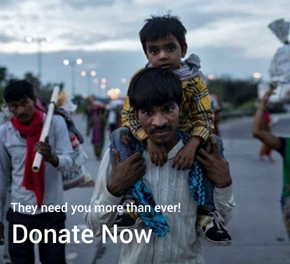Unseen Disease your Child may be carrying around!
Leukemia is a cancer of the white blood cells, which helps fight infection. The disease develops in the bone marrow. The bone marrow is the soft, spongy center of bones and is where blood cells are produced.
There are different kinds of leukemia. They are differentiated by how long it takes for the disease to progress (acute or chronic) and the type of white blood cell involved (lymphocyte or myelocyte).
Did You Know? Leukemia is the most common form of childhood cancer.
.jpg)
TYPES OF LEUKEMIA
There are three kinds or types of Leukemia found in young children:
1. Acute lymphocytic leukemia (ALL)
2. Acute myeloid leukemia (AML) – most common type of leukemia in children.
3. Chronic myeloblastic leukemia (CML) – this is rare in children.
4. Chronic lymphocytic leukemia (CLL) - CLL is very rare in children.
“Acute” = sudden − coming on in days or weeks.
“Chronic” = gradual − coming on over months or years.
Lymphocytes and myelocytes are two different kinds of white blood cell.
WHAT CAUSES LEUKEMIA?
This disease is mostly caused by a permanent change in the structure of DNA (Deoxyribo Nucleic Acid) or RNA (Ribonucleic acid) in the genes of white blood cells (WBCs).
In simple words, it is a form of Cancer caused by a rise in the number of white blood cells in your body. These white blood cells crowd the RBCs or Red Blood Cells and platelets which our body requires to be healthy.
This weakens the immune system, which in fact, is a very crucial part in causing leukemia. Certain viruses and polluted air and water also weaken our immune system and leave a high risk of causing leukemia, especially in children.
WHAT ARE THE SYMPTOMS OF LEUKEMIA?
As mentioned earlier, Leukemia is a form of bone cancer, where blood is formed. The early symptoms are often related to the bone marrow.
.jpg)
However, some of these are common symptoms too. So, always consult your child’s doctor for a diagnosis.
1. Anemia – You might have heard that “Anemia is very common in women.” But it is common in children too, especially in this case. Children may appear tired, pale and, may breathe faster to make up for the decrease in blood’s ability to carry oxygen.
2. Bleeding or Bruising – Children may appear to bleed or bruise very easily. Tiny red dots are often seen on their body. This may be due to some vessel that has ‘leaked’ or bled.
3. Vulnerable to infections – Because leukemia affects the body’s infection-fighting cells, a child with this disease may develop certain infections, such as a sore throat or bronchial pneumonia. Moreover, a headache, low-grade fever, mouth sores or skin rash may accompany the infection.
4. Bone and Joint Pain – Pain from the bone marrow being too crowded may cause arthritis joint pain.
5. Abdominal (stomach) distress – Belly pain, poor appetite and/or weight loss may occur. Kidney, liver, and spleen, are likely to collect Leukemia cells, causing swelling of these organs.
6. Swollen Lymph Nodes – Swelling of lymph nodes under arms or in the groin, chest or in the neck may appear.
7. Difficulty in breathing – Leukemia cells tend to clump around the thymus gland behind the breast bone. Therefore, wheezing, coughing, and/or painful breathing need prompt medical attention.
TREATMENT FOR LEUKEMIA
.jpg)
There are various treatments for leukemia. Your child’s doctor will decide what to do base on your child’s risk level. The risk level depends on:
- Your child’s age
- Your child’s overall health and medical history
- Genetics
- The type of leukemia
- How well your child can tolerate the treatments
- How far along the disease is
- How the disease is expected to progress
- Your preference
- Treatment begins by taking care of the early symptoms. Such as anemia (too few red blood cells), bleeding and/or infection.
Treatment for leukemia may also include:
- Chemotherapy – Strong medicines are given by mouth. These drugs target cells that grows at a high speed, as cancer cells do.These strong drugs can also harm some normal cells.
- Intrathecal medications / chemotherapy – Medicine is given into the area around the spinal cord by needle.
- Radiation therapy – Targeted energy (X-rays) kills leukemia cells. It also helps with pain from swollen liver or lymph nodes. Moreover, it can relieve pain from bone marrow expansion.
- Blood and bone marrow / stem cell transplantation – High-dose chemotherapy and radiation are given to destroy the cancer cells in the bone marrow. Then, fresh healthy stem cells are needed to replace the bone marrow cells that have been killed. For this, donor stem cells are given by IV. From there, they make their way to the bone marrow. These fresh stem cells then start making normal WBCs, RBCs and platelets.
- Biological / immunological therapy – Anti-bodies are given against the cancer cells. These may help the immune system of the body to find and kill the bad cells. Else, they may help guide drugs or radiation directly to the cancer cells.
- Medicines – Drugs can be given to prevent or treat side effects of leukemia. Medicines may be given for nausea or pain.
- Blood transfusions – These can be used to replace red blood cells and/or platelets.
- Antibiotics – To prevent or treat infections.
- Follow-up care – Follow-up is needed to measure how well treatment is working. It can help doctors know if the disease is coming back and help them manage any late effects of treatment.
CAN LEUKEMIA BE PREVENTED?
At present, there is no known way to prevent leukemia.

Manmeet Kaur






